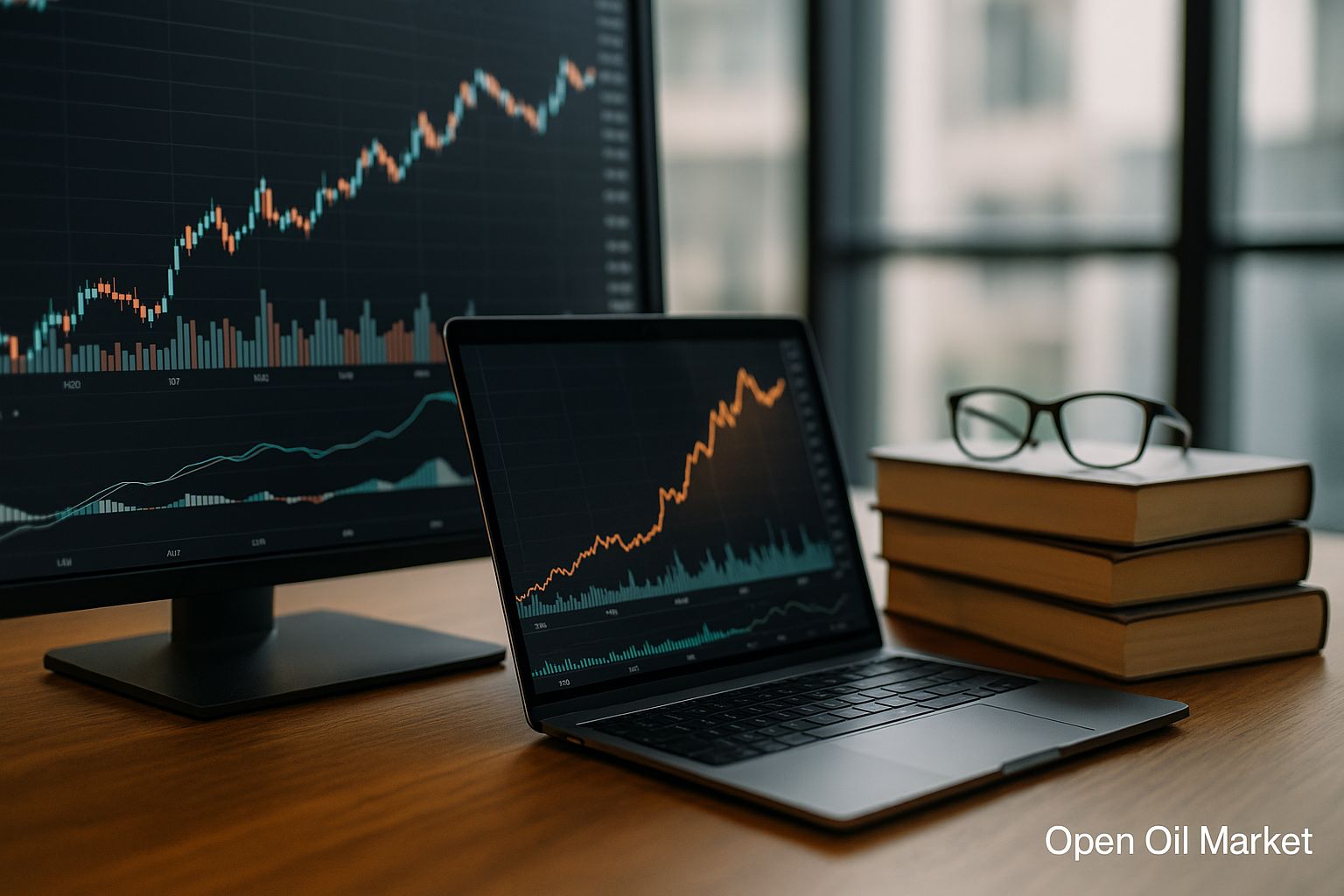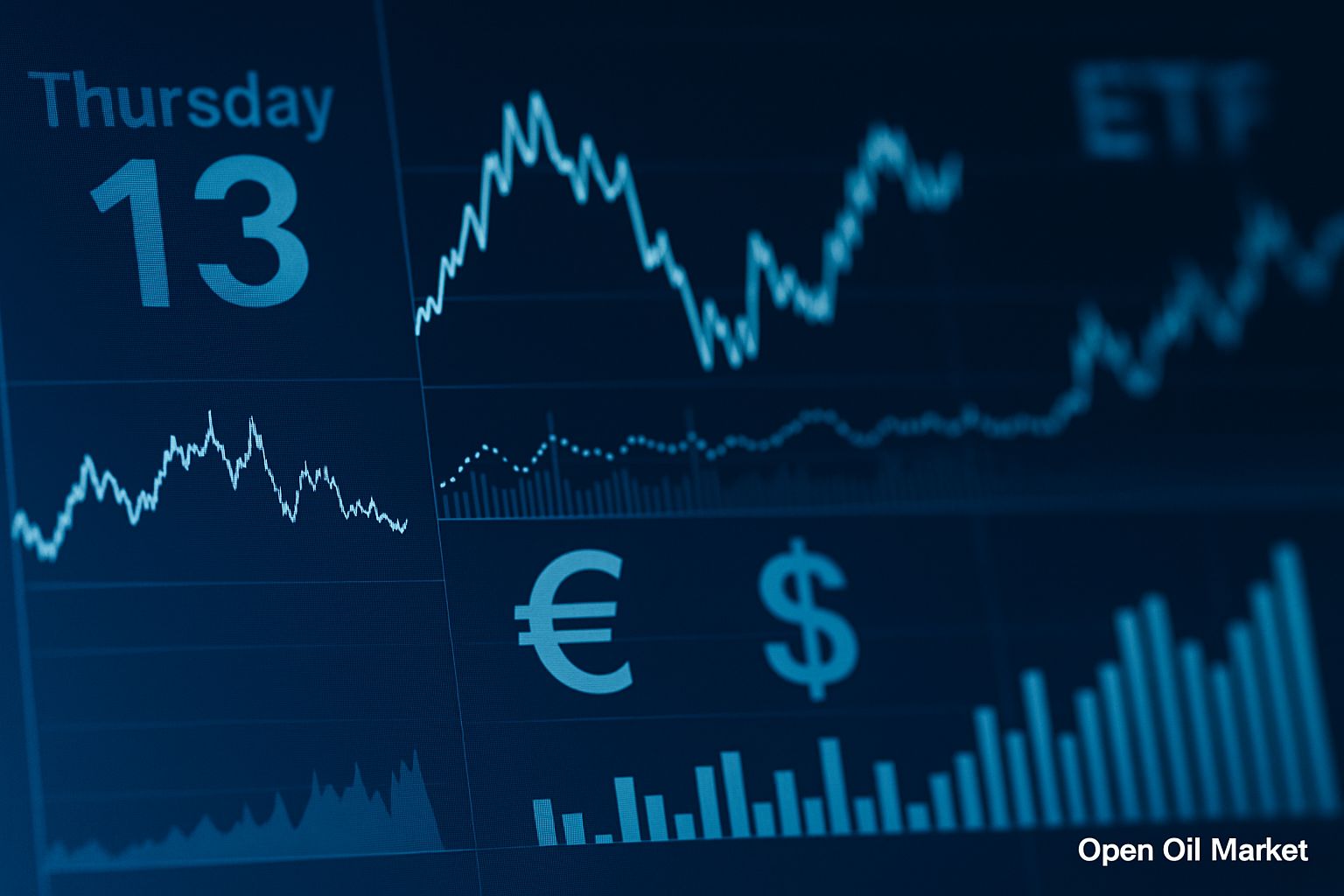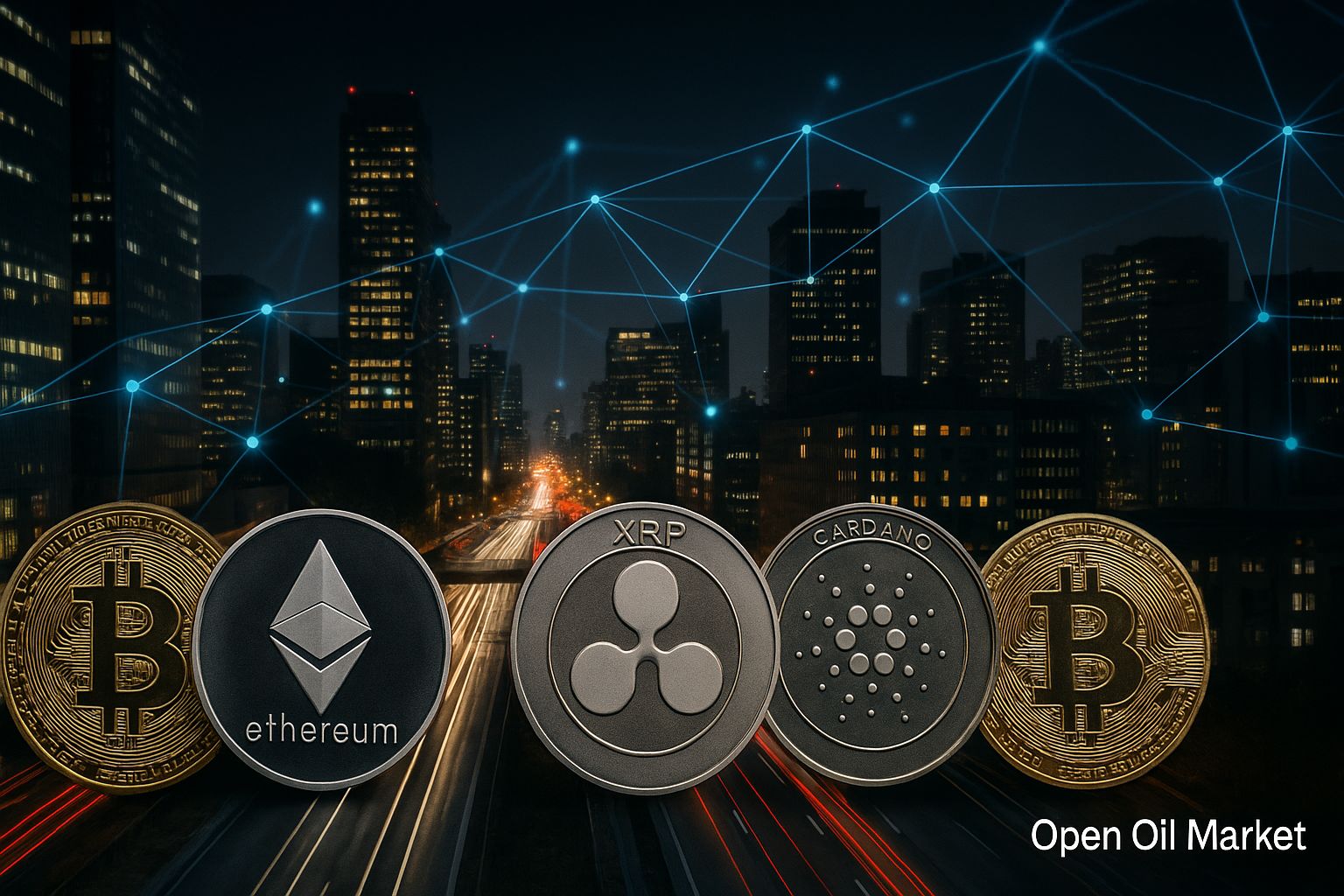
Key Venture Market News for 21 October 2025: The Return of Mega Funds, Record Rounds in AI, a Boom in Defence Technologies, and the Revival of IPOs. An Analysis of Key Venture Investment Trends Across the Globe.
By the end of October 2025, the global venture market is demonstrating a robust recovery following a protracted downturn in recent years. Investors worldwide are once again actively financing technology startups—record deals are being closed, and companies' plans for initial public offerings (IPOs) are back in the spotlight. Major players are returning to the arena with substantial investments, while governments in various countries are ramping up their support for innovation. Consequently, private capital is gradually re-entering the startup ecosystem, providing resources for new growth. According to industry analysts, the total volume of venture investments globally surged by nearly 40% year-on-year in the third quarter of 2025, underscoring a revived risk appetite.
The increase in venture activity is being observed across all regions. The United States continues to lead, particularly in the field of artificial intelligence (AI), while investment volumes in startups in the Middle East are rapidly rising, and Germany has overtaken the United Kingdom for the first time in the number of venture deals in Europe. In Asia, a relative decline persists in China, whereas India, Southeast Asia, and the Gulf States are attracting record capital. Moreover, the investment boom is spreading to new frontiers: emerging tech hubs are forming in Africa and Latin America in line with global growth. The startup ecosystems in Russia and the CIS countries are also striving to keep pace, despite external constraints. A global venture boom is taking shape at an early stage, although investors are still acting selectively and cautiously.
Below are the key events and trends shaping the venture market agenda as of 21 October 2025:
- The return of mega funds and large investors. Leading venture funds are attracting unprecedented amounts of capital and significantly increasing investments, saturating the market with liquidity and enhancing risk appetite.
- Record rounds in the AI sector and a new wave of “unicorns”. Unprecedented investment sizes are driving startup valuations to unseen heights, particularly within the AI segment.
- The revival of the IPO market. Successful public offerings by technology companies and new listing applications confirm that the long-awaited “window” for exits is once again open.
- A boom in investments in defence technologies. The geopolitical situation is boosting interest in startups related to defence and security, which are now at the forefront of the venture agenda.
- Diversification of sector focus. Venture capital is being directed not only to AI but also to fintech, climate projects, biotechnology, and even crypto startups, expanding the horizons of market growth.
- A wave of consolidation and M&A deals. New mergers, acquisitions, and strategic investments are redistributing power in the industry, creating additional opportunities for exits and accelerated company development.
- Local focus: Russia and CIS. New funds and initiatives are being launched in the region to promote local startup ecosystems, drawing investors' attention to local projects.
The Return of Mega Funds: Big Money Back on the Market
The largest investment players are triumphantly returning to the venture stage, marking a new rise in risk appetite. For instance, the American firm Andreessen Horowitz has announced the formation of a new mega fund of approximately $20 billion to invest in promising AI startups, while Japanese conglomerate SoftBank is launching Vision Fund III with a target size of about $40 billion, aimed at cutting-edge technologies. Sovereign funds from Gulf countries have also sharply increased their activity; they are pouring billions into technology projects and initiating state mega-programmes, thereby forming their own tech hubs in the Middle East. Simultaneously, dozens of new venture funds are being established worldwide, attracting significant institutional capital for investments in high-tech sectors.
The return of such “big money” from renowned Silicon Valley funds and global investors not only intensifies competition for the best deals but also instils confidence in the industry regarding the continuing influx of capital. The American venture sector has amassed record reserves of uninvested capital (“dry powder”)—hundreds of billions of dollars are ready to be deployed as new opportunities arise. Large funds are flooding the market with liquidity, providing resources for new funding rounds and supporting the growth of promising companies' valuations.
Record Investments in AI and a New Wave of Unicorns
The sphere of artificial intelligence stands out as the primary driver of the current venture upswing, demonstrating unprecedented levels of funding. Investors worldwide are eager to invest in AI sector leaders, directing colossal amounts of money into the most promising projects. For instance, the xAI project, founded by Elon Musk, has managed to attract approximately $10 billion in funding, while AI model developer OpenAI has secured around $8–9 billion in funding at a company valuation of approximately $300 billion. There are reports that one company developing AI infrastructure is negotiating a multibillion-dollar round at an exceptionally high valuation. As a result of this investment frenzy, a plethora of new “unicorns”—startups valued at over $1 billion—has emerged.
The high influx of capital is quickly inflating the valuations of young AI companies. Startups in the field of artificial intelligence are now achieving “unicorn” status at record speeds, particularly in the segments of generative AI and related infrastructure. While some experts warn of signs of overheating at early stages (where any project labelled as AI is assigned inflated multipliers), the fear of missing out on the next technological revolution continues to fuel further influxes of capital. As a result, nearly half of all venture investments in 2025 are directed towards the AI sector, with a significant portion of total capital concentrated in a few dozen companies, each attracting hundreds of millions of dollars. As long as investor appetite for AI projects remains high, the artificial intelligence sector is experiencing an unprecedented boom.
The IPO Market Comes to Life: A Window of Opportunity for Exits
The global market for initial public offerings is emerging from a lull and gaining momentum. In recent months, several notable venture companies have successfully completed IPOs, achieving high valuations on the stock market. Investors are once again ready to acquire shares of technology newcomers, as evidenced by impressive debuts: for instance, interface developer Figma and fintech giant Circle debuted on the public market with immense success—their capitalisation soared by hundreds of percent in the early days of trading. In 2025, the total number of technological IPOs has markedly increased compared to the previous year, with over a dozen unicorn startups going public in the third quarter alone, collectively valued at over $90 billion at the time of listing.
Venture investors perceive these signals as confirmation that the long-awaited “liquidity window” for exits is indeed open. Many companies that delayed going public during the downturn of 2022–2023 are now resuming their IPO plans and applying to regulators. Among expected major debuts is the Swedish fintech unicorn Klarna, preparing for a placement valued at around $14 billion, as well as several other technology unicorns globally. The success of these new offerings allows founders and funds to lock in profits and restores confidence that the venture cycle can once again conclude with planned exits. The window of opportunities for investment exits has reopened, facilitating the flow of capital into the next generations of startups.
A Boom in Defence Technologies: A New Priority for the Venture Market
Against the backdrop of geopolitical tensions, the niche of defence and military technologies is experiencing explosive growth. Venture investors are increasingly financing startups related to defence, security, and aerospace. In Europe, since the beginning of 2022, investments in defence startups have surged: only in the first months of 2025 have companies in this sector raised around €1.4 billion, which is many times more than in previous periods. This heightened interest is being fuelled by government contracts and the search for innovative solutions for the military—from drones to biotechnological sensors. American funds are also joining in; new players focused on military technologies have emerged in the United States, while some existing corporations (such as defence contractors) are launching their own venture divisions to scout promising developments.
The rapid influx of capital into the defence-tech sector is establishing a new priority in the venture market. Startups that were previously peripheral to interest (military AI systems, robotics for the army, cybersecurity, etc.) are now coming to the forefront. Although some experts caution that the hype surrounding defence technologies may reach a peak, investors are currently willing to invest actively in this area, given the high demand from government clients and the acute relevance of developments. The boom in defence startups illustrates how quickly venture capital adapts to new global challenges and is redirected towards areas promising significant growth in demand.
Diversification of Investments: Not Just AI
In 2025, venture investments are encompassing a broader range of sectors and are no longer solely focused on artificial intelligence. Following the decline of the previous year, funding in other segments of the technology market is being renewed, making the current upswing more balanced. Funds are seeking to diversify their portfolios, allocating capital to promising projects across various fields. Key areas attracting investor attention include:
- Fintech: new financial technology services and digital banks continue to secure significant investments amid sustained demand for online services. Global investments in the fintech sector once again amount to tens of billions of dollars, demonstrating a “second wind” for the industry following the downturn of 2022–2023.
- Climate and environmental projects: solutions in clean energy, emission reduction, and “green” technologies are gaining support due to the priority of sustainable development (ESG). For instance, a coalition of private venture firms led by Bill Gates’ Breakthrough Energy Ventures announced the creation of a $300 billion fund to finance climate startups, planning to make its first investments this year.
- Biotechnology and medicine: investments in developing new drugs, genetic research, and longevity technologies remain at a high level. Pharmaceutical giants and specialised funds are actively investing in biomedical startups, anticipating breakthrough products and high market potential.
- Cryptocurrencies and blockchain: following a decline in interest in recent years, crypto startups are once again on the radar of venture investors. The stabilisation of the digital asset market and progress in regulation have drawn attention to new projects in decentralised finance, blockchain infrastructure, and Web3.
Thus, venture capital is now being directed towards a wide array of sectors—from finance and energy to medicine and crypto technologies. The strategy of broadening sector focus aims to mitigate the risks of overheating in one segment (such as AI) and ensure more sustainable development of the entire startup ecosystem.
Consolidation and M&A Deals: Enlarging Players
High valuations of startups and fierce competition for new markets are prompting the industry towards consolidation. A wave of significant mergers and acquisitions is once again at the forefront, reshaping the power dynamics in the technology sector. In the third quarter of 2025, numerous notable M&A deals took place, including the acquisition of several unicorns by strategic investors. Both large corporations aiming to acquire promising developments and successful startups themselves, joining forces to strengthen their market positions, are driving consolidation.
Major technology companies are actively acquiring innovative startups to expand their product lines and outpace competitors. For example, leading players in the AI market are acquiring small AI companies to bolster their technologies, fintech banks and payment systems are acquiring young services to integrate new features, while pharmaceutical conglomerates are actively buying out developers of promising drugs in biotech. This type of consolidation is reshaping the industry landscape, enlarging key players and enabling the most successful projects to scale up more quickly under the aegis of larger partners. For venture funds, the wave of M&A presents additional exit paths for investments: strategic deals are increasingly becoming an alternative to IPOs, providing investors with the long-awaited profits. Although the overall volume of buyout deals may fluctuate quarterly, the trend towards business enlargement is evident—mergers and acquisitions have once again become an integral part of growth strategies in the technology sector.
Russia and CIS: Local Initiatives Amid Global Trends
In Russia and neighboring countries, despite external constraints, there is also a noticeable revival of venture activity. According to industry studies, the volume of venture investments in the Russian Federation nearly doubled in the first half of 2025 compared to the same period last year (although the initial volumes remained modest), reaching several dozen million dollars. At the same time, the total number of deals has decreased, indicating a new trend: there is more money but fewer projects. In other words, investors are betting only on the strongest teams. The average round size has increased, and the requirements for startups have tightened—getting approved is now more difficult, but those projects that have gained trust are attracting significantly larger capital.
New funds and programmes aimed at supporting technology companies are launching in the region. Government institutions and large corporations are increasingly participating in the development of the local startup scene: industry accelerators, regional venture funds (such as the Moscow AI development fund or corporate funds from state companies), and innovation clusters are being established. These initiatives aim to compensate for the outflow of foreign capital and to integrate local projects into the broader global trends. Despite sanction barriers, Russian and CIS ecosystems are attempting to align with global trends—from artificial intelligence to new industrial technologies. Gradually, the local venture market is restoring trust: investors are exhibiting cautious interest in competitive startups within the country and are preparing to fund their growth.
Cautious Optimism and Sustainable Growth
By the end of autumn 2025, moderately optimistic sentiments have prevailed in the venture industry. Successful IPOs and significant deals signal that the downturn period is behind us, although investors are still choosing to act selectively and are focusing on projects with sustainable business models. The significant capital inflows into sectors such as AI, fintech, defence technologies, and others instil confidence in continued growth, but funds are increasingly monitoring risks closely, seeking to avoid market overheating. The industry is entering a new phase of development with an emphasis on quality, balanced growth. Market participants are adoptive cautious optimism: there is an understanding that the forthcoming wave of innovations can yield substantial results if a sensible balance is maintained between ambitious investments and disciplined risk assessment.




